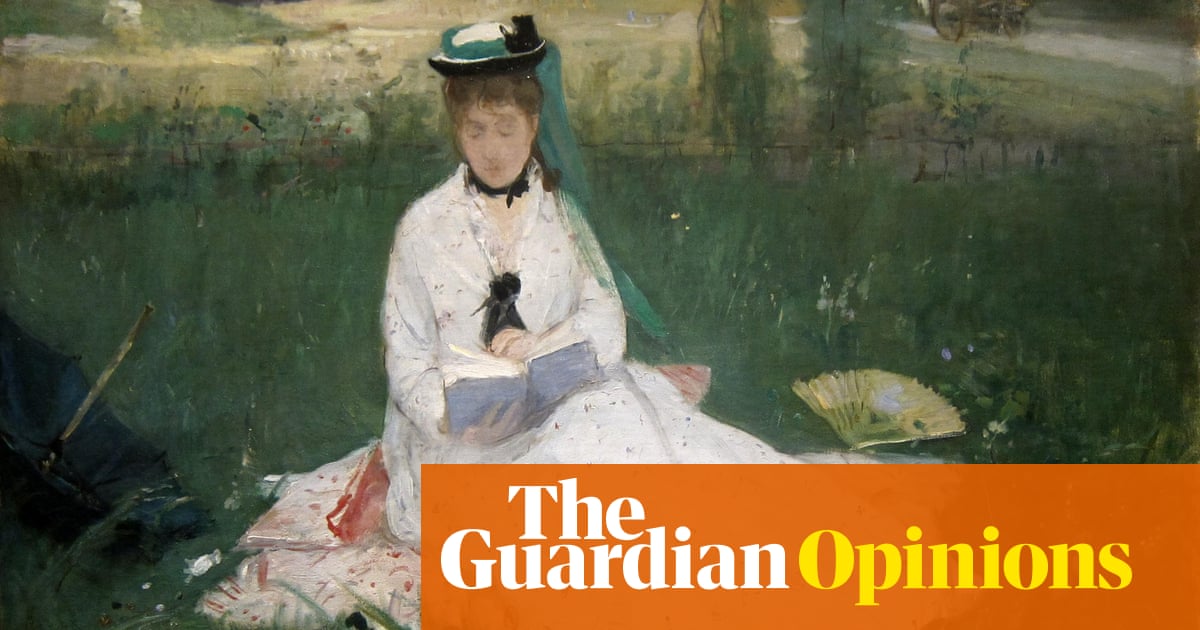
For a 1936 exhibition at MoMA in New York, Alfred H Bar Jr created a flow chart depicting the evolution of modern art in Europe from impressionism through a series of other “-isms”, culminating in abstraction. The chart has become widely derided for its easy-to-follow depiction of art movements evolving in a fixed progression, with no consideration of any artists working outside the Parisian avant garde. The National Gallery’s new exhibition, After Impressionism: Inventing Modern Art, feels like walking through this defunct diagram.
When the gallery announced the exhibition last year, Twitter users criticised its framing around the three “pivotal figures” of Paul Cézanne, Paul Gauguin, and Vincent van Gogh, and its lack of work by women. The gallery responded with a claim that more “major” works by women would be announced in due course. In the final exhibition, there are a total of five works made by women: paintings by Paula Modersohn-Becker, Sonia Delaunay, and Broncia Koller-Pinell, and sculptures by Camille Claudel and Käthe Kollwitz. The show includes a total of 94 paintings and sculptures, meaning that 5% of the exhibition is by women – actually a five-fold improvement on the National Gallery’s permanent collection, of which 1% of the objects are made by women.
Including work by female artists just to tick boxes is not enough of a reason to do it; in fact, it’s a bad reason. But this show is about the period 1886-1914, in which women outnumbered men in art schools across Europe and Britain and in which they increasingly participated in exhibitions, both avant garde and state-sponsored. The National Gallery’s exhibition is incomplete without representing these artists. By framing it around three male geniuses, including one child molester (Gauguin), the curators have perpetuated the traditional and patriarchal narrative of art history that sees it as a story of individual artists working in brilliant isolation, churning out completely original visual languages that suddenly disrupt the way art was made. The impressionists themselves, in whose outsize influence this show, and modern art generally, is consistently located, worked collaboratively and collectively – and their exhibitions included work by three women: Berthe Morisot, Marie Bracquemond and Mary Cassatt.
If it feels tiresome to keep being told that women are left out, consider how tiresome it feels to keep going to exhibitions about modern art with the exact same works on the walls. At the simplest level, European “modern art” is defined as art made between approximately 1860 and 1960 that is concerned with the conditions of modern life: urbanisation, industrialisation, globalisation, the decline of traditional belief systems and governments, and all the other kinds of change that swept through the Western world in the decades on either side of 1900. It’s a fraught term that is entangled with “modernism” and “modernity”, which are also constantly being redefined. This exhibition attempts to “broaden” the narrative by including work not made in Paris, with a focus on the centres of modernist work in Barcelona, Berlin, and Vienna. These works are fascinating and make it obvious that there is no singular strand of art making “After Impressionism”. Yet the exhibition creates one – most of the art from Barcelona and central and eastern Europe is located in smaller rooms off the main galleries, literally outside the linear progression from Cézanne to Picasso.
The unquestioning focus on the avant garde in exhibitions of modern art like this one is, in itself, patriarchal. Artists who sought to work outside institutional boundaries or to disrupt norms could only do so if they had the option to be part of the mainstream. The disruption exists because they left on purpose. Women artists did not usually begin from a place at the centre of the establishment. Those who wished to pursue a career as artists sought acceptance as serious professionals and a recognition of their skills. They did not generally have the luxury of breaking the rules – and they were also frequently barred from joining organised avant garde groups. That means that a lot of art made by women in the 19th and early 20th centuries is not avant garde, but that does not make it less modern.
This observation is not new – feminist and social art historians have been making it since the 1970s. Lately, female artists are often framed as pioneers or innovators just because they existed, and it is true that they had to overcome more obstacles than their male peers. But their work was less likely to be aesthetically radical or disruptive, which does not mean it is less interesting or beautiful. The narrative we are fed by this exhibition, and by traditional art history textbooks, is that the avant garde is the only thing worth remembering when studying modern art. But it was only a fraction of the art being made around the turn of the century. It is fascinating, radical and sometimes gorgeous, but it is only part of the story.
That is not to say that female artists were never radical – those included in this exhibition and others who are not, such as Gwen John, Hilma af Klint, Marie Laurencin, Suzanne Valadon, Gabriele Münter, and many others, not to mention North American artists and women working outside the traditions of western art, all created incredibly creative and groundbreaking visual languages. But an old-fashioned art history that continues to demand that we only remember the famous men who broke the rules, and that we structure the stories we tell about the history of art around a linear narrative with no space for ambiguity or regression, is a false one.
After Impressionism: Inventing Modern Art is at the National Gallery, London, until 13 August












